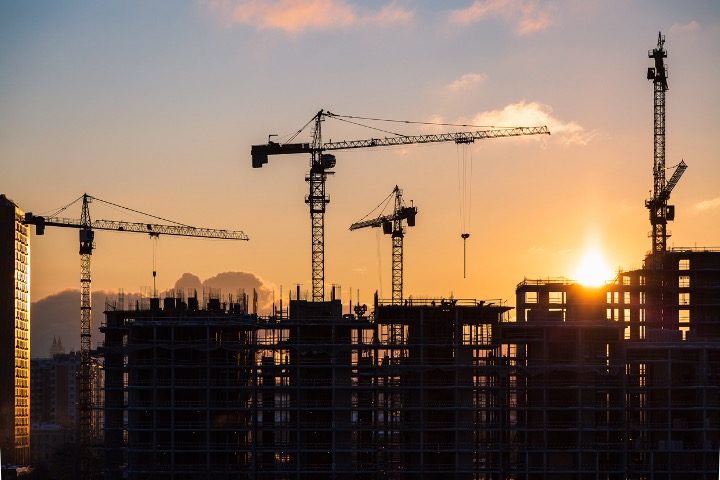
A new report from the United Nations Environment Programme (UNEP) and the Yale Center for Ecosystems + Architecture (Yale CEA) calls for massive changes to the construction industry in order to reduce the sector’s carbon footprint. The report calls for increased government regulations across the industry as well as a move toward more “climate friendly” building materials.
It’s a truly dire situation, according the the UN. “Rapid urbanization worldwide means every five days, the world adds buildings equivalent to the size of Paris, with the built environment sector already responsible for 37 per cent of global emissions,” a UNEP press release states.
While acknowledging that the industry has made some strides regarding the “operational” carbon emissions of the buildings the industry creates, the new UNEP report claims that the industry lags behind with their continued use of carbon-intensive materials such as cement, steel, and aluminum.
“To effectively address this challenge, international action and collaboration must bring together all stakeholders from across the entire lifecycle of the buildings sector, both within informal and formal settings,” the report points out.
Toward that end, the report calls for a three-pronged strategy for the decarbonization of the construction industry.
First, the UN hopes to avoid what it calls “unnecessary extraction and production.” The report calls for less new construction through the repurposing of existing buildings. According to the report, remodeling old buildings causes “50-75 per cent fewer emissions” than new construction projects.
Secondly, they would like to drastically change the materials used to build from those carbon-intensive materials such as steel, aluminum, and cement to what the report calls “renewable bio-based building materials,” such as timber, bamboo, and biomass. The authors of the report claim that this material switch could reduce construction emissions by 40 percent by 2050.
Bamboo? Really?
Lastly, UNEP would like to see an across-the-board improvement and decarbonization of the materials used in construction. The authors would like to see a massive electrification of the methods used to produce steel, aluminum, cement, bricks, and glass. And that electrification should be from renewable energy sources — not fossil fuels. In addition, the report calls for an emphasis on using recycled materials on construction projects.
“Until recently, most buildings were constructed using locally sourced earth, stone, timber, and bamboo. Yet modern materials such as concrete and steel often give only the illusion of durability, usually ending up in landfills and contributing to the growing climate crisis,” said Sheila Aggarwal-Khan of UNEP’s Industry and Economy Division.
“Net zero in the building and construction sector is achievable by 2050, as long as governments put in place the right policy, incentives and regulation to bring a shift the industry action [sic],” Aggarwal-Khan added.
The report calls for industry-wide changes in construction methods and materials.
“Since the built environment sector is so complex, with interdependencies across actors, all hands on deck are required to decarbonise, and we can’t leave anyone behind,” said Anna Dyson of Yale CEA. “Policies must support the development of new cooperative economic models across the building, forestry and agricultural industries, in order to galvanize a just transition towards circular, bio-based material economies that can also work synergistically with the conventional material sectors.”
Of course, one person’s “just transition” can be another person’s government interference. The changes proposed by UNEP and Yale CEA would require massive government intrusion upon the construction sector as well as the industries that create the building materials. Among the greatest costs in construction today is government regulation. Adoption of these principles will only add to those costs.
The report even admits this: “Government regulation and enforcement is also required across all phases of the building life cycle — from extraction through end-of-use — to ensure transparency in labelling [sic], effective international building codes, and certification schemes. Investments in research and development of nascent technologies, as well as training of stakeholders in the sectors, are needed, along with incentives for cooperative ownership models between producers, builders, owners, and occupants to the shift to circular economies.”
So, the UN is proposing “international building codes” now? Imagine the additional bureaucracy involved in something like that.
And worst of all, none of it will affect the weather in any meaningful way.




